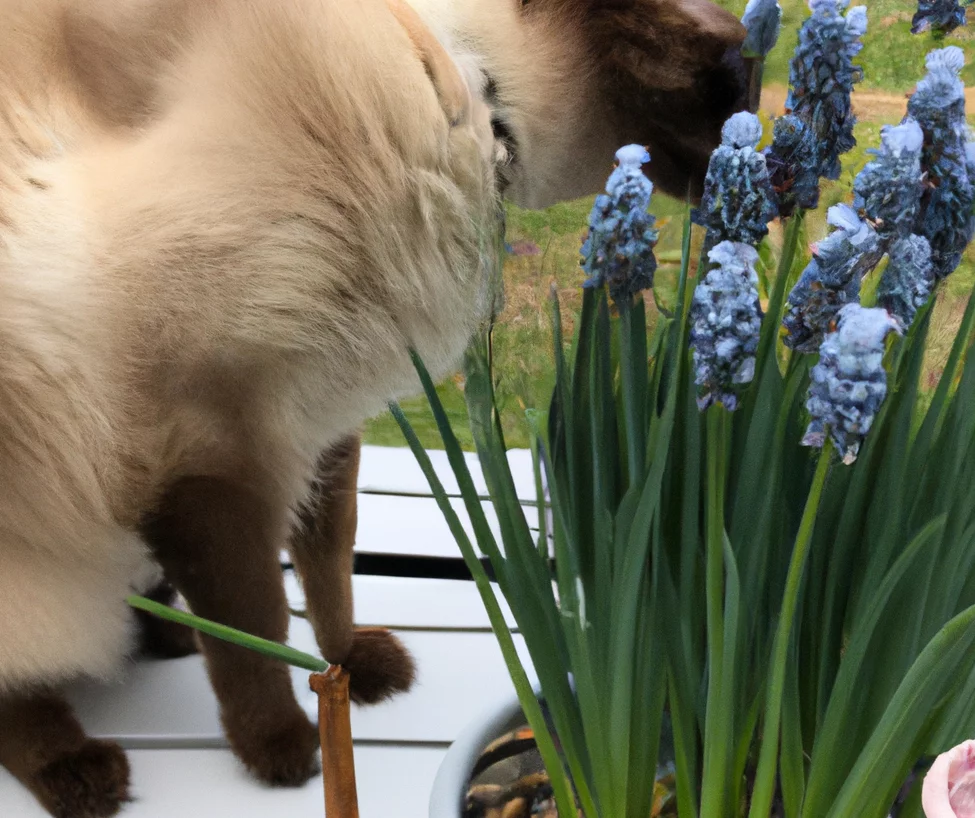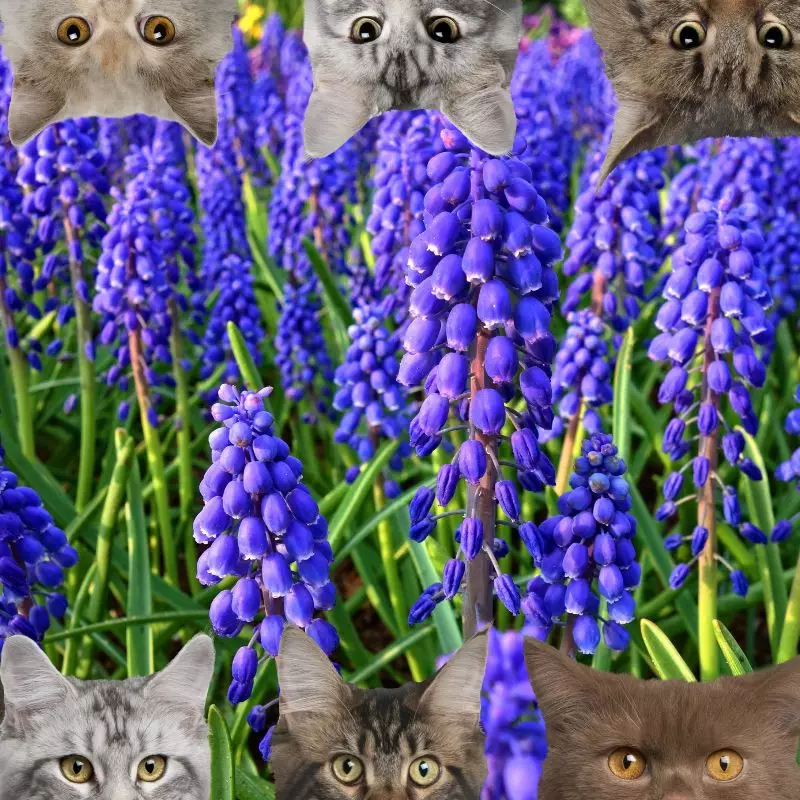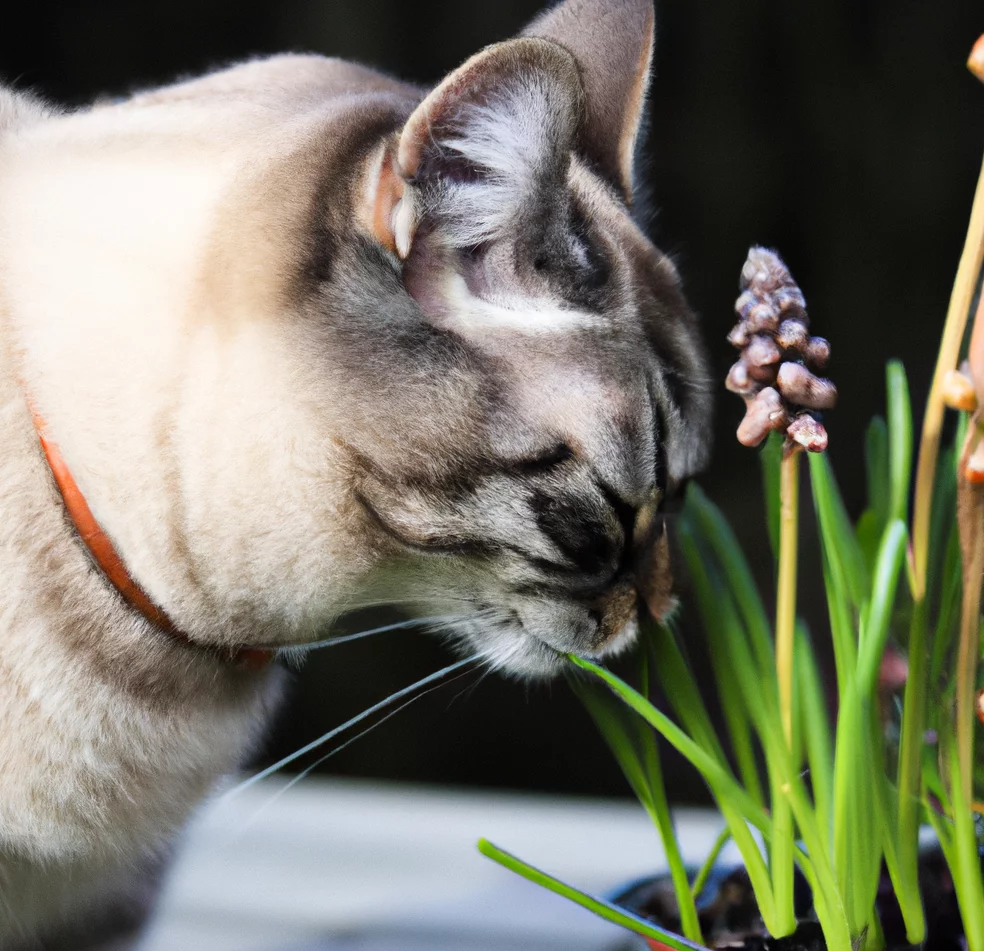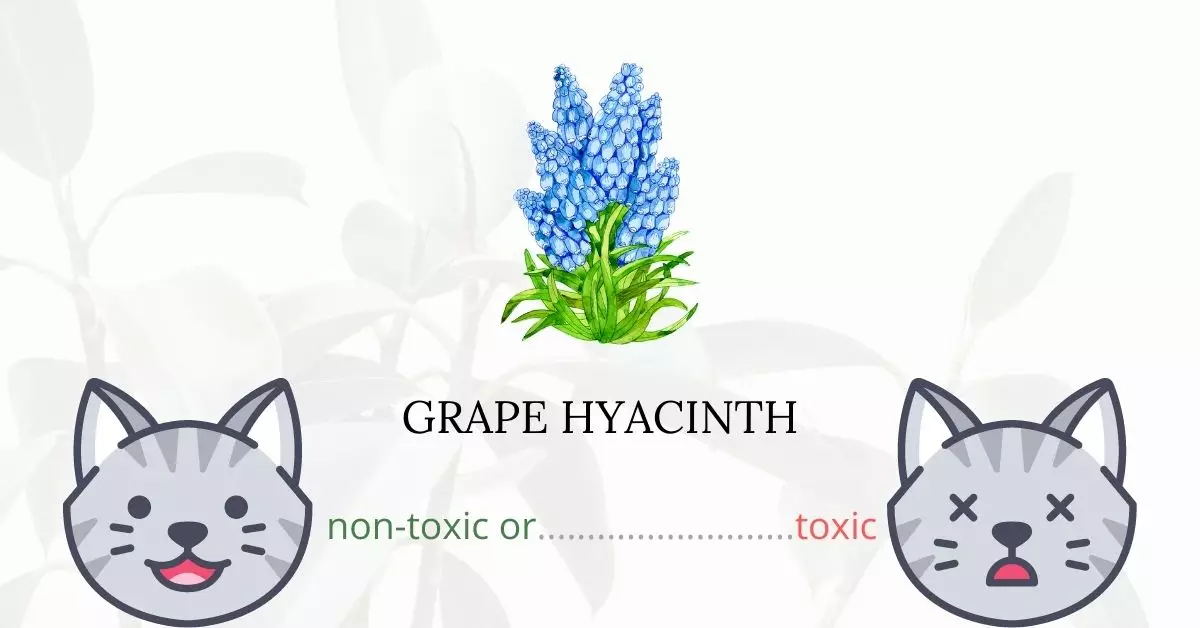Grape Hyacinths are not toxic for cats. It’s essential for pet owners to know that this plant is safe to have in homes with cats, dogs, and even horses, as confirmed by authoritative sources like the American Society for the Prevention of Cruelty to Animals (ASPCA). That being said, it’s always prudent to prevent pets from consuming plants, even non-toxic ones, routinely.
This article was crafted in collaboration with a team of experienced DVMs (Doctors of Veterinary Medicine) to ensure accuracy and up-to-date information regarding the potential risks associated with various plants, including Grape Hyacinths. Our comprehensive research also encompasses insights from high-authority websites such as ASPCA and PetMD. Read on to delve deeper into the effects of grape hyacinths on cats.
Can Cats Eat Grape Hyacinth?

Cats can safely touch, lick, or bite a small portion of grape hyacinth. But you should not be complacent and let your cat eat a whole piece of grape hyacinth. Eating a lot of grape hyacinth may cause felines to experience vomiting and diarrhea.
Plant-care products like fertilizers and pesticides can also affect your feline companions. Be cautious when using these products as it can cause toxicity in cats when the toxic chemical residues are inhaled or ingested.
What is Grape Hyacinth?

Scientifically known as Muscari armeniacum, the grape hyacinth is a flowering plant previously belonging to the lily family (Liliaceae) and now belongs to the asparagus family (Asparagaceae).
Grape hyacinth is commonly found in the woodlands and meadows of the Eastern Mediterranean, including Greece, Turkey and Armenia which gives it its scientific name. While the common name is derived from the similarity of the clusters of the tiny, bell-shaped, cobalt-blue blooms to upside-down grape clusters.
Muscari armeniacum is a bulbous perennial with simple leaves at the base and short blooming branches. The flowers are commonly purple, blue, white, or light pink in color, depending on the species. They usually bloom around mid-spring. The plant grows at an average height of 15 cm (6 in).
Grape hyacinths are attractive and ideal to use as cut flowers. These blooms open in descending order from the bottom to the top of the inflorescence, with the bottom blooms fading as the top blooms emerge.
Keeping Cats Away From Grape Hyacinth

Make your own deterrent solution by diluting vinegar with water. Spray this solution on your plants to keep your cats away from them. Cats detest the sour taste and odor of vinegar so they will most likely avoid it. Citrus peels are also good deterrents but use them cautiously because certain parts of citrus fruits can be toxic for cats. You can also buy a natural deterrent at a pet supply store near you or just purchase it online.
You can also place aluminum foil on the ground near your plants or wrap it around your plant pots. Felines will most likely avoid aluminum foil because they hate its crinkly surface and sound.
Plants to Avoid For Your Cats
If you are a cat owner and unsure if the plants growing in your yard are harmful to your cats, check out this list of toxic plants for cats. You can also check our list of non-toxic plants for cats.





